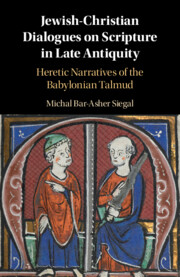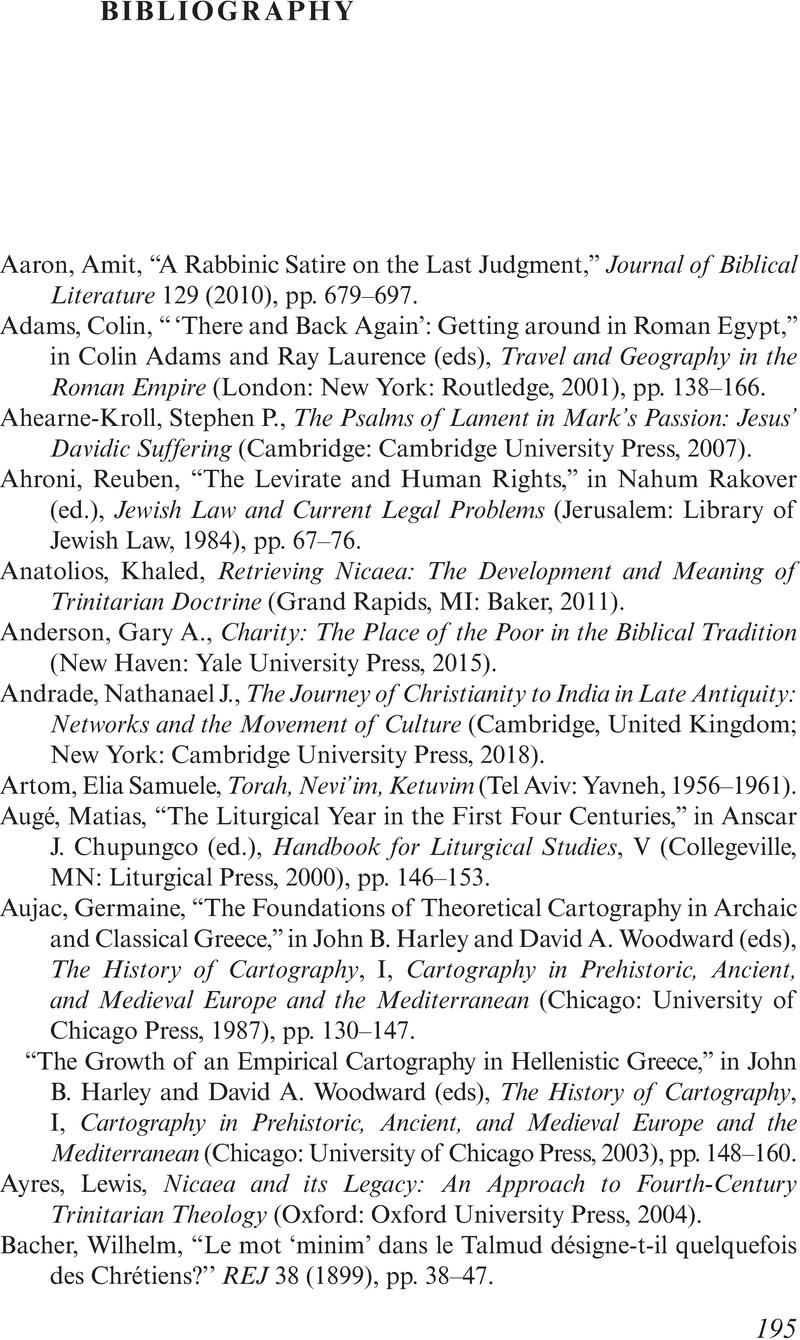 Jewish-Christian Dialogues on Scripture in Late Antiquity
Jewish-Christian Dialogues on Scripture in Late Antiquity Book contents
- Jewish-Christian Dialogues on Scripture in Late Antiquity
- Jewish-Christian Dialogues on Scripture in Late Antiquity
- Copyright page
- Contents
- Acknowledgments
- 1 Minim Stories in the Talmud: Introductory Discussion
- 2 “A Fool You Call Me?”: On Insult and Folly in Late Antiquity
- 3 “He Who Forms the Mountains and Creates the Wind”: Amos 4:13 and the Jewish-Christian Argument in b. Ḥullin 87a
- 4 “Rejoice, O Barren One Who Bore No Child”: Isaiah 54:1 and the Jewish-Christian Argument in b. Berakhot 10a
- 5 “The Best of Them is Like a Brier”: Micah 7:4 and the Jewish-Christian Argument in b. ‘Eruvin 101a
- 6 “He has Drawn off from Them”: Hosea 5:6 and the Jewish-Christian Argument in b. Yevamot 102b
- 7 Reflections
- Bibliography
- Index of Primary Sources
- Subject Index
- References
Bibliography
Published online by Cambridge University Press: 02 May 2019
- Jewish-Christian Dialogues on Scripture in Late Antiquity
- Jewish-Christian Dialogues on Scripture in Late Antiquity
- Copyright page
- Contents
- Acknowledgments
- 1 Minim Stories in the Talmud: Introductory Discussion
- 2 “A Fool You Call Me?”: On Insult and Folly in Late Antiquity
- 3 “He Who Forms the Mountains and Creates the Wind”: Amos 4:13 and the Jewish-Christian Argument in b. Ḥullin 87a
- 4 “Rejoice, O Barren One Who Bore No Child”: Isaiah 54:1 and the Jewish-Christian Argument in b. Berakhot 10a
- 5 “The Best of Them is Like a Brier”: Micah 7:4 and the Jewish-Christian Argument in b. ‘Eruvin 101a
- 6 “He has Drawn off from Them”: Hosea 5:6 and the Jewish-Christian Argument in b. Yevamot 102b
- 7 Reflections
- Bibliography
- Index of Primary Sources
- Subject Index
- References
Summary

- Type
- Chapter
- Information
- Jewish-Christian Dialogues on Scripture in Late AntiquityHeretic Narratives of the Babylonian Talmud, pp. 195 - 218Publisher: Cambridge University PressPrint publication year: 2019


